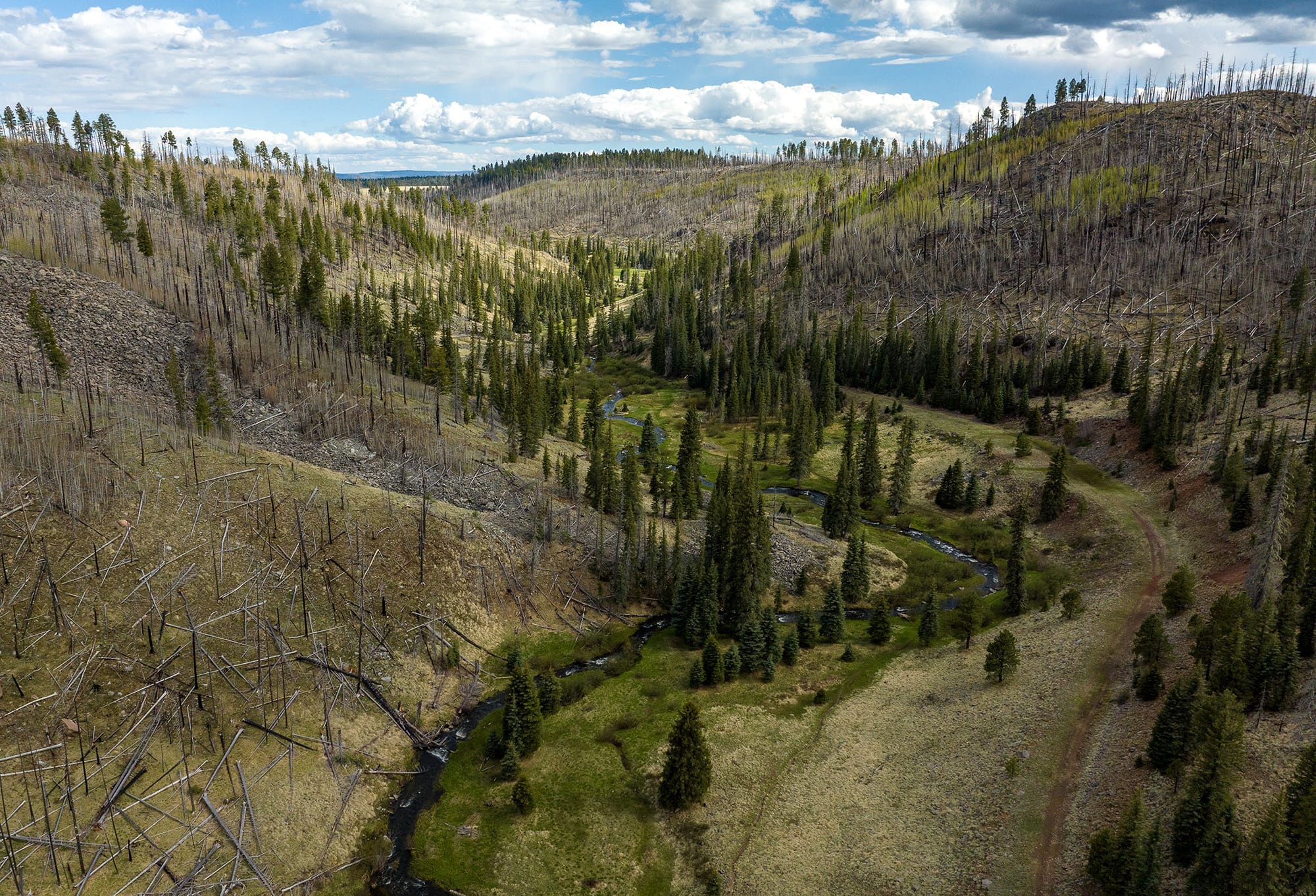On Apache Trout, and the people who ensured their survival
July in Arizona and the heat lies out there like some hulking great beast, a monster with an appetite that seems always unsated. It swallows all when it can, but we humans move behind glass, the bake held at bay in containers of refrigeration. A plane, the rampway from the plane to the terminal, the train to the rental lot, the rental car.
It is the black of night and the thermometer on the rental says 101. Midnight and 101. Could be a verse from a bluegrass song.
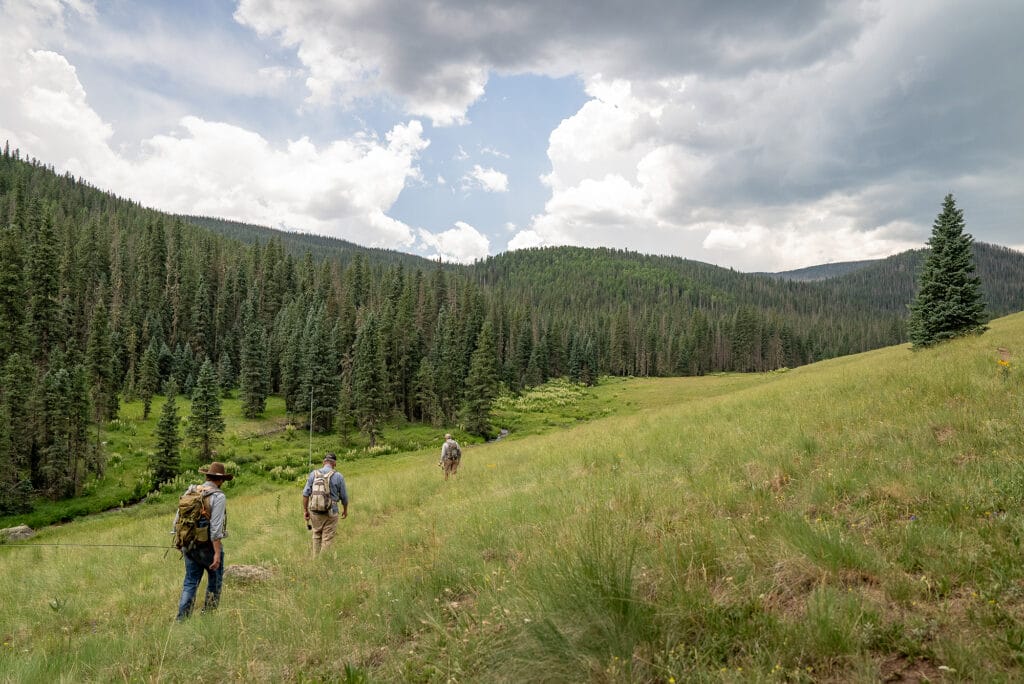
But we leave the city behind us, Josh and I—photographer and writer on assignment for TROUT—and as we climb away from the desert toward the mountains, the temperature falls. One hour north on the Beeline Highway up in Payson it’s in the high 80s and an hour north of that up in the Mogollon Rim country—Zane Grey country—it’s in the low 80s and by three in the morning at our destination beneath the ponderosas, it’s in the high 50s, the windows are down and the air conditioning a forgot – ten modern technology.
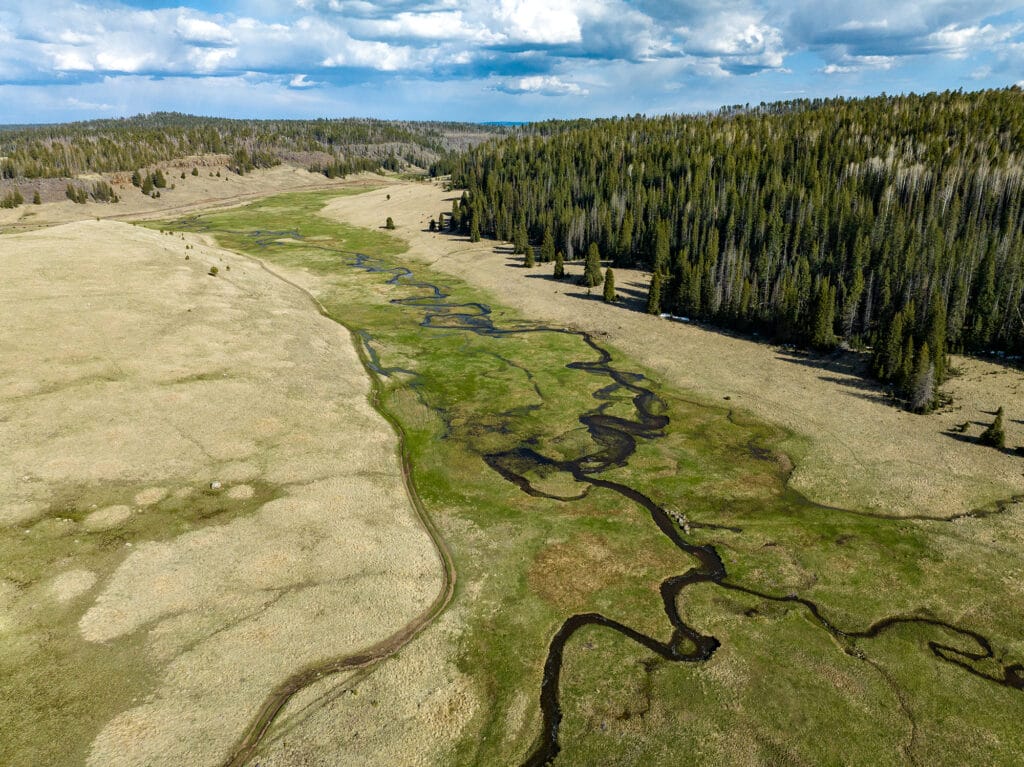
This is Apacheria, the heart of some of the most unlikely country in the desert Southwest, that is if you think of Arizona and New Mexico as desert and cactus and road runners and coyotes. But if you know the topography a little bit, you know that these neighbor-brother states are among the most diverse in the entire country, places of raw, tough beauty and high stunning handsomeness that have climates and life zones across the spectrum. This part of Arizona, the White Mountains, is ponderosa pine and aspen, coldwater streams building in high mountain holds, rushing through deep Englemann spruce forests, into meadows lined with skunk cabbage and wildflowers everywhere.
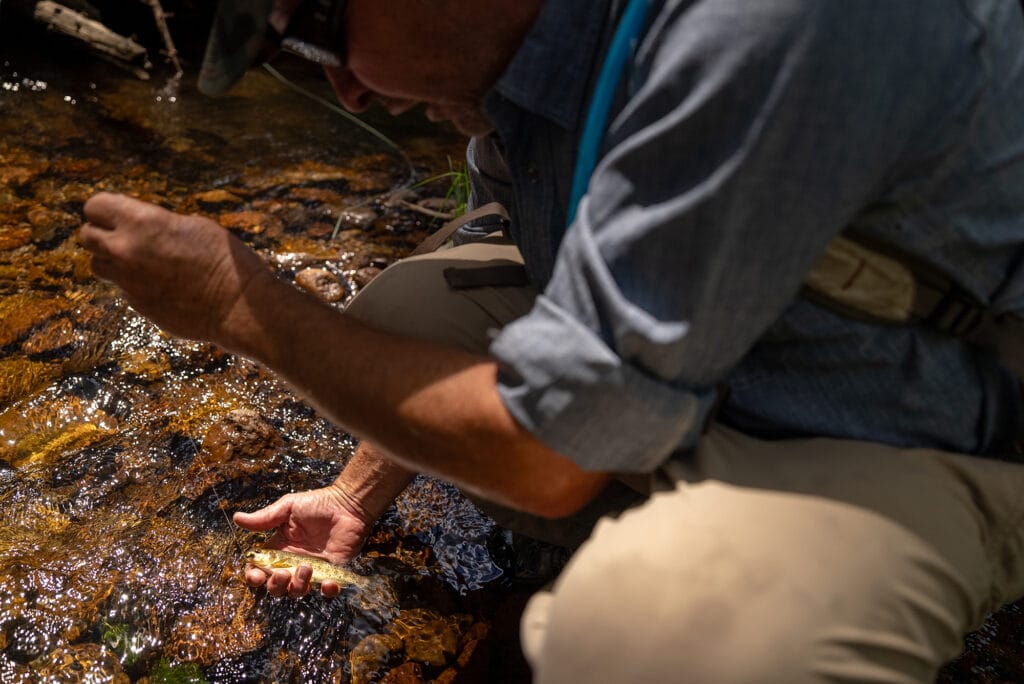
Apache creation story relays that the mountains were strong, durable anchors that helped the Earth withstand the elements. These mountains, it is said, were made tall on the eastern horizon so the waters could flow to the west. The White Mountain Apache Reservation, home to approximately 15,000 people, covers 1.67 million acres of this high country, mostly pines, spruce, aspen and juniper. One of Arizona’s two viable ski areas is here. Snow clings to high rimrock into early summer. To the south lies the San Carlos Apache Reservation at 1.8 million acres; together these reservations are an area more than a million acres larger than Yellowstone National Park.
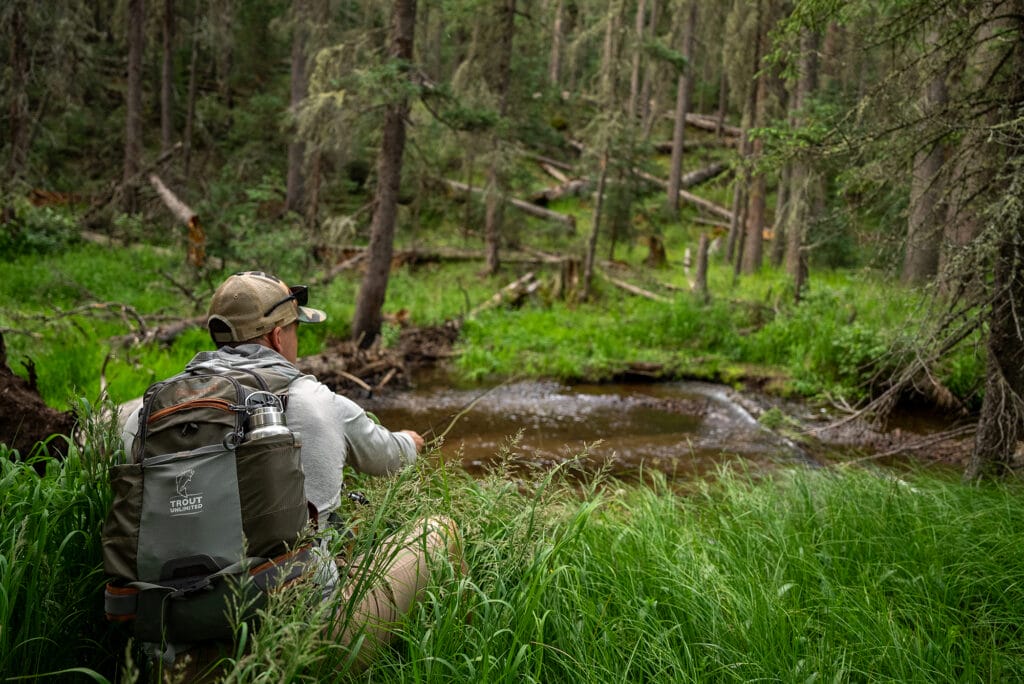
July in this Arizona looks a lot like July in the Montana of the movies. Maybe even better. The mosquitoes are none. The hummingbirds are many as are the elk, which are both more plentiful than in my part of Montana but also much bigger; huge bulls trot across the road in the headlights of our car. The Mexican food is almost universally good which is something I cannot say about my home state, not by a long shot. If I were blindfolded and dropped into this country and asked to name where I am, I might guess Montana’s Big Belts or Colorado’s Lone Cone country or Wyoming’s Big Horns.
We are here for the Apache trout. To fish for them, certainly, but also to see them in their natal waters, this rare trout that only lives in high streams of the White Mountain Apache Reservation and eastward on the Apache-Sitgreaves National Forest and nowhere else on the planet. We are here to understand how this gold-splashed trout has bounced from nearly disappearing entirely to being a candidate to be removed from the Endangered Species list, the first-ever sport fish taken off the fabled (or infamous, depending upon one’s viewpoint) list. This week, as rufous and broad-tailed hummingbirds fighter-jet the sky, we will walk into Apacheria to learn about a trout, a people and a landscape that all can be characterized by one word: Resilience.
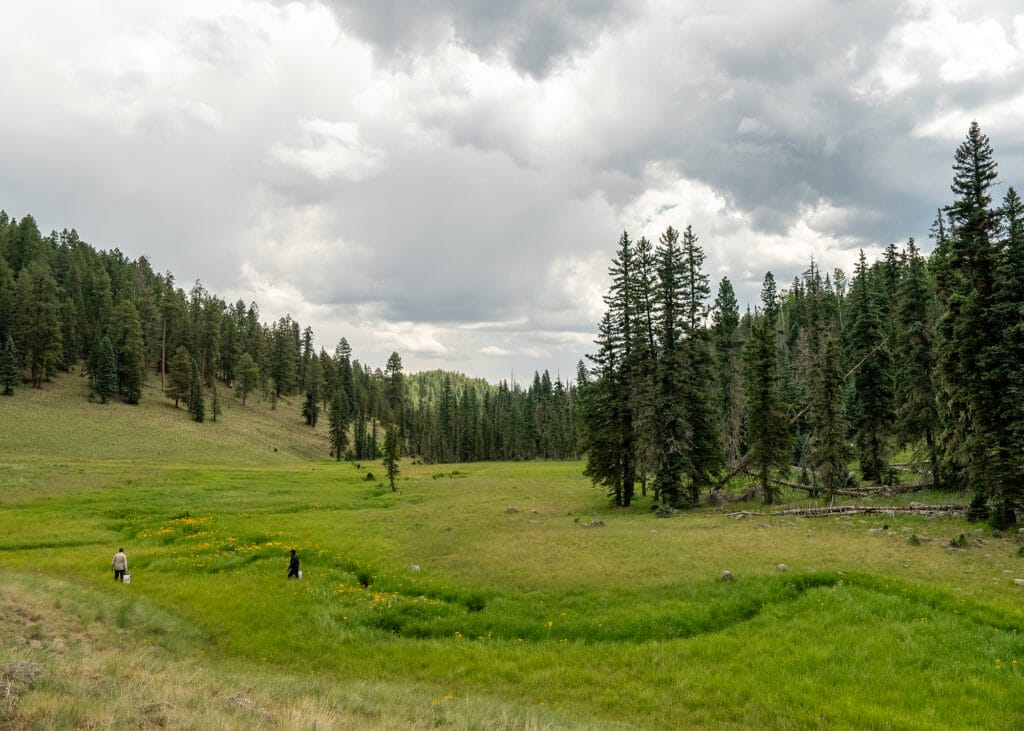
Tim Gatewood left his part of Arizona, this part of Arizona, as a young man many years ago. Gatewood, a White Mountain Apache, got a job delivering cold drinks in a hot desert, lugging cases and cases of soda pop into stores and onto the campus of the University of Arizona. He remembers seeing students in the aptly-named student lounge as he sweated through the three-digit heat delivering RC Cola and the like.
“I thought, ‘Man, I need to go to college,’” he remembered.
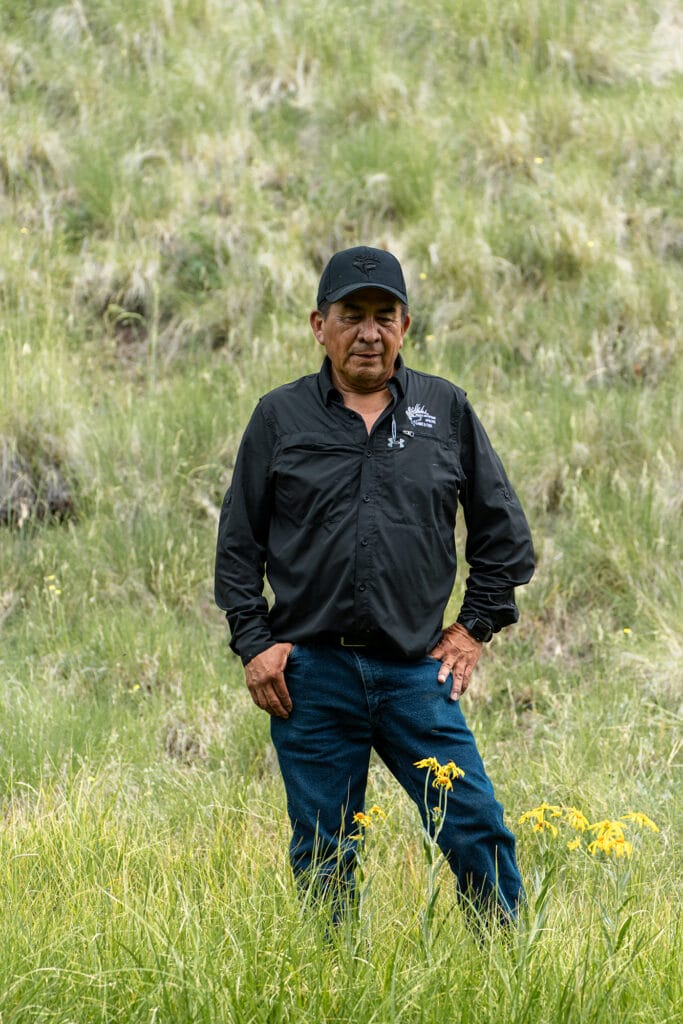
He did. After his stint as a pop delivery guy, he knew what he wanted, a career in the great outdoors, so he went back to U of A in Tucson where he got a degree in wildlife biology. After college and back home among the cool pines, he helped survey populations of Mexican spotted owls, another ESA-listed spe – cies, guided nonresident hunters on the tribe’s famous trophy elk herd and jumped into the fisheries program for the White Mountain Apache Game and Fish. Today, his career has reached a legacy moment: the proposed delisting.
Late-50s, soft-spoken, Gatewood is what many would call buttoned-up with a pressed black Wrangler shirt, creased jeans and an all-black ball cap carrying the attractive logo of the White Mountain Apache Game and Fish Department, a logo which Gatewood himself designed that shows a regal bull elk and the other icon of the White Mountains, the rare and beautiful Apache trout. Ronnie Lupe, a former tribal chairman, once wrote that “harmony with nature and the natural world is the goal of every Apache,” and Gatewood is the very essence of this statement. In a now-decades-long career with the department, Gatewood has garnered a reputation as a man who gets things done, who has helped bring the venerated sport fish of his tribal homeland back from the brink of winking out altogether, and someone who has worked hard to bring the youth of the Apache people into the great outdoors. It is the later accomplishment of which he is likely most proud, but if the Apache trout comes off the list, that will be an accomplishment almost without peer in any career.
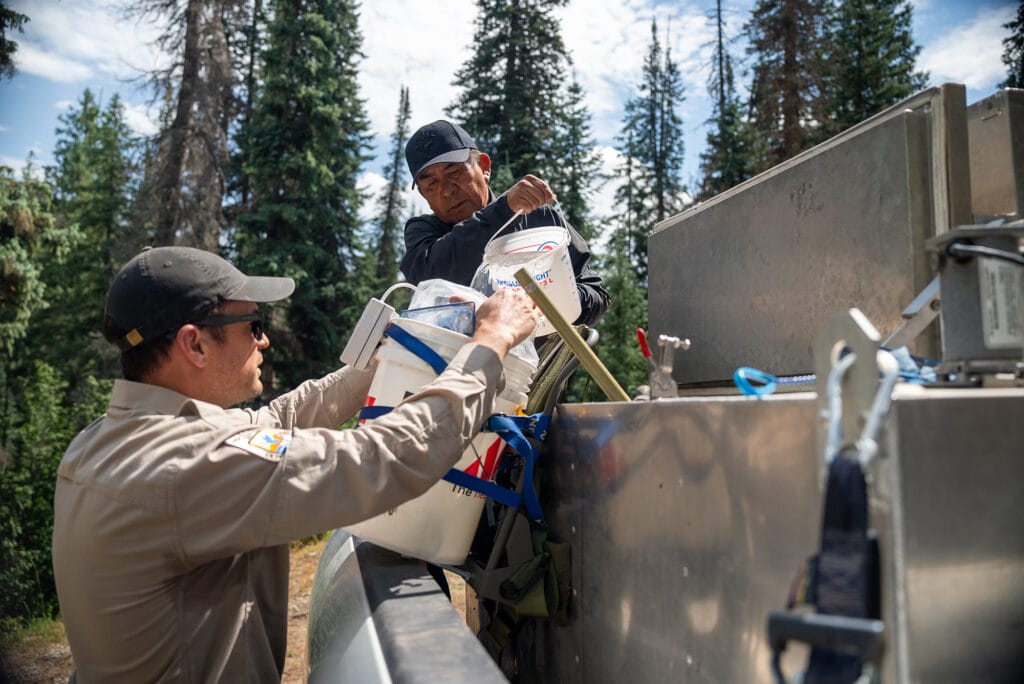
In thick spruce forest at the head – waters of Black River, Josh and I catch up with Tim and Zac Jackson, a North Dakota farm kid turned fisheries biologist who totes the same can-do attitude as his colleague. Jackson is the project leader for the U.S. Fish and Wildlife Service, the agency that has worked alongside the tribal agency for decades. Gatewood and Jackson have just returned from a run-and-gun road trip to Oregon in a hatchery truck carrying hundreds of male brook trout, driving late into the night, buying ice to cool down the fingerlings, fueled by caffeine and “get-‘er-done.” Now Josh and I are tagging along as Gatewood and Jackson lug five-gallon plastic buckets in modi – fied backpacks—think Homer’s Home Depot bucket with shoulder straps. The buckets are filled with water and brook trout and carried into a tiny tributary that flows off the flanks of 11,391-foot Baldy Peak. These brook trout are stocked into the stream to eliminate other brook trout; the new trout are YY chromosome males that only can produce XY male offspring after mat – ing with the females that already exist in the stream. Someday, only male fish will swim here and this boys’-only club, unable to reproduce, will die out, leaving breathing room—and forage—for the Apache natives. This science, developed by fisheries biologists in Idaho, is just one of the methods of eradicating invasive non-native trout from Apache waters. Others, like the chemical rotenone are faster and effective, but controversial. On another branch of the same stream are Gatewood’s protégé, Matt Rustin, a member of the San Carlos Apache community who started off working with the tribal agency doing creel surveys and now works with Jackson at USFWS. With Matt is his young daugh – ter, Redgy, learning about what her dad does for a living, working in the woods, appreciating the great outdoors. After a summer of working on Apache trout with her dad, she’ll be off to college to study integrative biology. They too are stocking YY brookies.
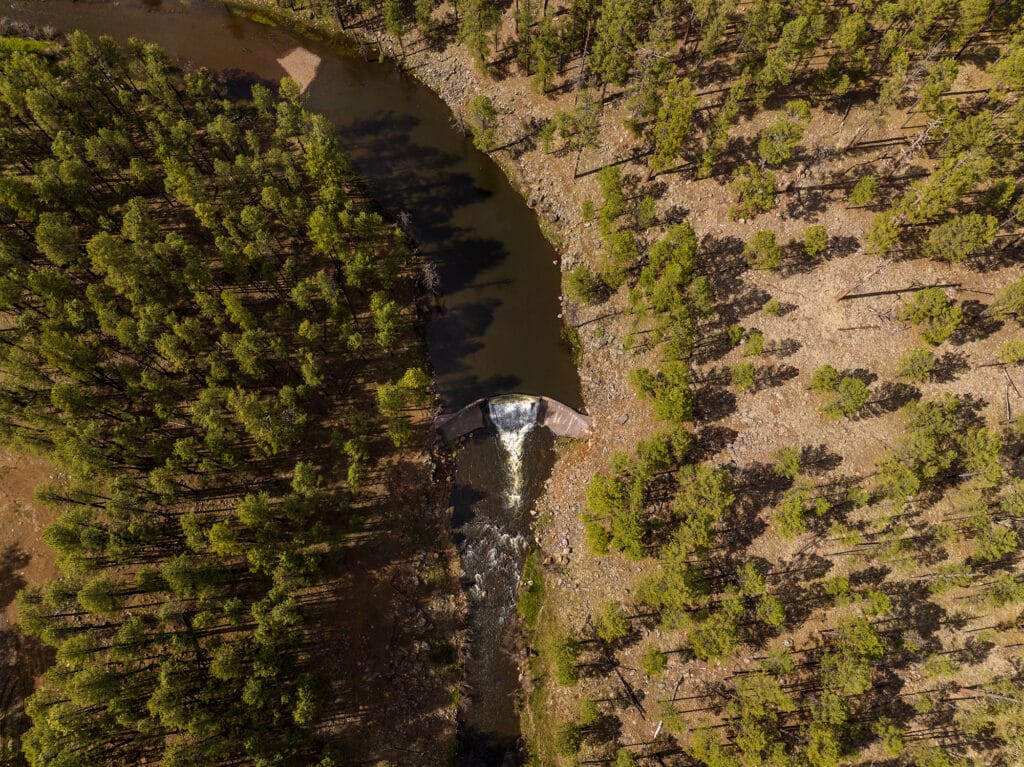
None of this would be happening if some prescient tribal council leaders, way back in 1955, had not taken a definitive action that set the course for Apache trout recovery. Way back then, two decades before the Endangered Species Act was signed into law by President Nixon, most of the White Mountain Apache Reservation was closed to all fishing. By tribal members and nonmembers alike. This, along with Baldy itself, is sacred ground with tiny streams building to feed the great fickle rivers of the Southwest, the same rivers that millions of desert rats depend upon, dam up and drink. Up here in the tall country, among the pines and spruce, Apache trout have now been swimming free of any angling pressure for almost three-quarters of a century.
There are two native trout of this part of the Southwest—the Gila and the Apache. Both are golden yellow in color, their sides peppered with black spots, but a coarser grind was used by the Creator on the Apache. The larger black spots and a horizontal stripe through the eye helped ichthyologists to set the Apache apart as a separate species in 1972, just a year before Nixon inked ESA. The trout was on the list as the ink came out of the President’s pen.
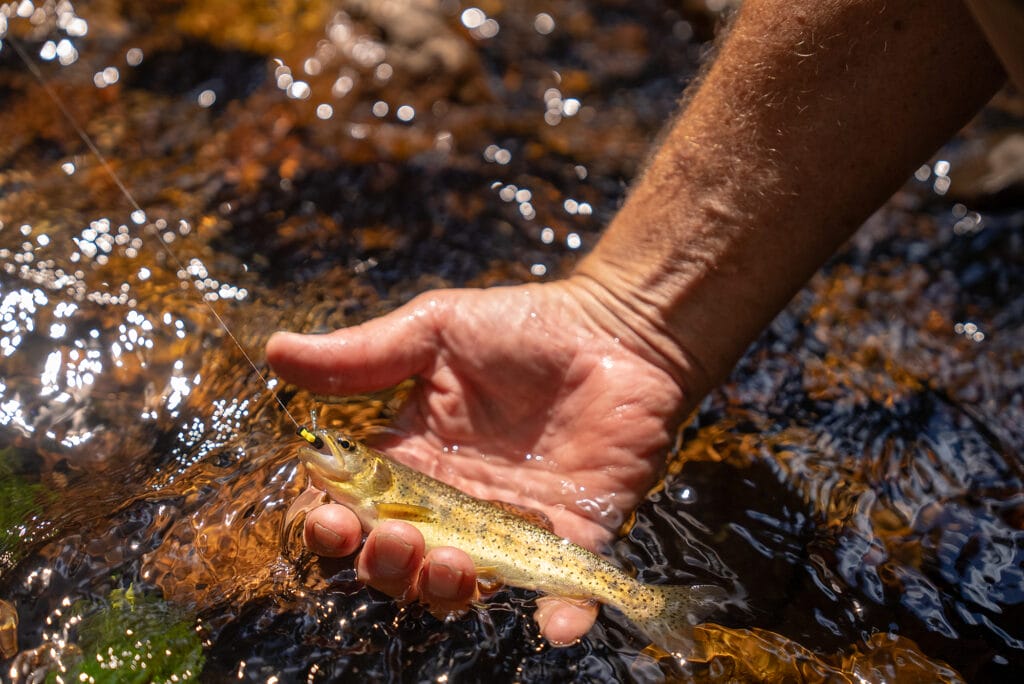
As with many native trout, the introduction of non-natives started the slide toward extinction. Prolific brook trout outcompete them in their own waters. Voracious brown trout eat them. Amorous rainbow trout pollute their genetic code. But 1955 came along and in one master stroke, their territory was protected. In the seven decades since, tribal game and fish biologists collaborated with the USFWS to restore and protect this core territory—creating fish passage barriers so those non-natives could not enter Apache homeland, eradicating populations of invasives where they had, and monitoring. Always monitoring.
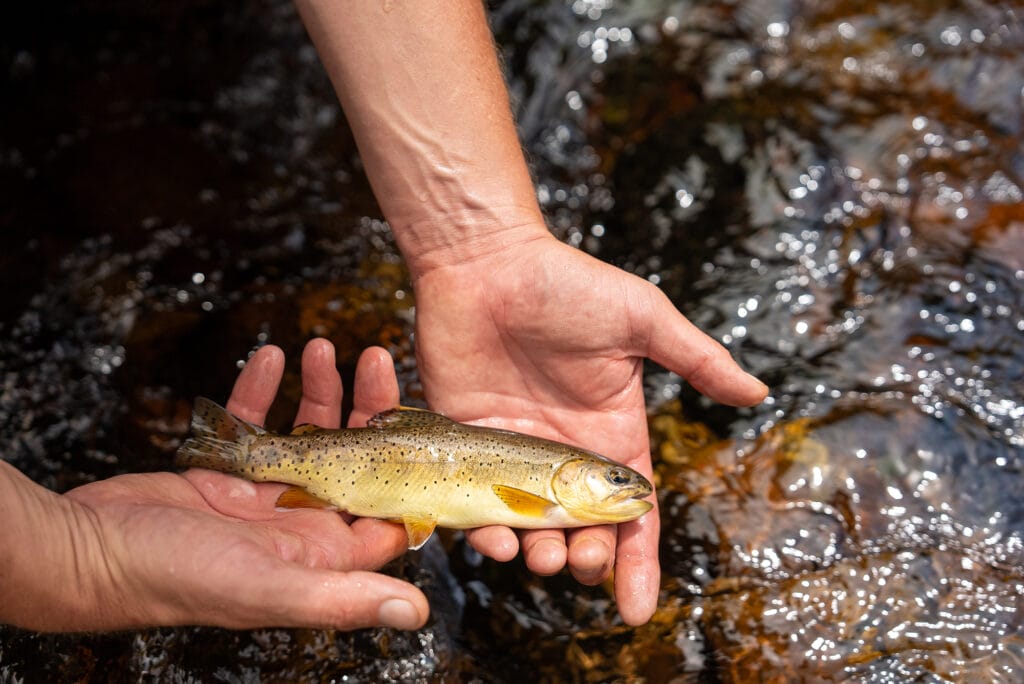
In 2017, scientists with Trout Unlimited worked with agency personnel to develop a very ambitious tracking program en route to potential delisting. “The monitoring goals were so rigorous that I didn’t think the agencies would be able to pull it off,” remembered TU’s Dan Dauwalter, the organization’s lead Apache trout scientist. In some cases, this monitoring was 25 times more ambitious than a typical fisheries surveillance program, pulled off with crews hired and trained by Gatewood and Jackson and the Arizona Game and Fish Department off the reservation.
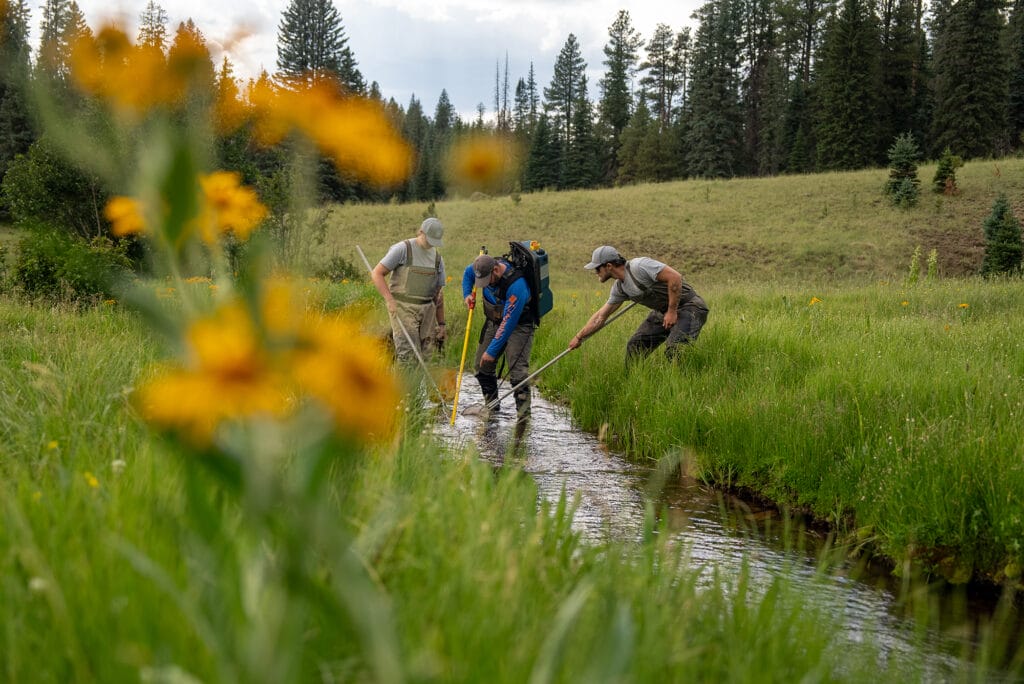
Every known population of Apache trout—on and off the reservation—was surveyed repeatedly, leading to an intensive five-year scientific review. Today on the reservation 35 distinct waters hold pure Apache trout, and it appears, with the proposal for delisting filed in August 2023, that the Apache will be the first-ever sport fish to come off the list, highlight of an effort 50 years in the making. Coming off the list will give fisheries biologists even more tools to protect the fish, with much less bureaucratic sausage-making to get there. Monitoring, guarding the core and expanding will continue without the sometimes onerous hurdles that have come in the last half century.
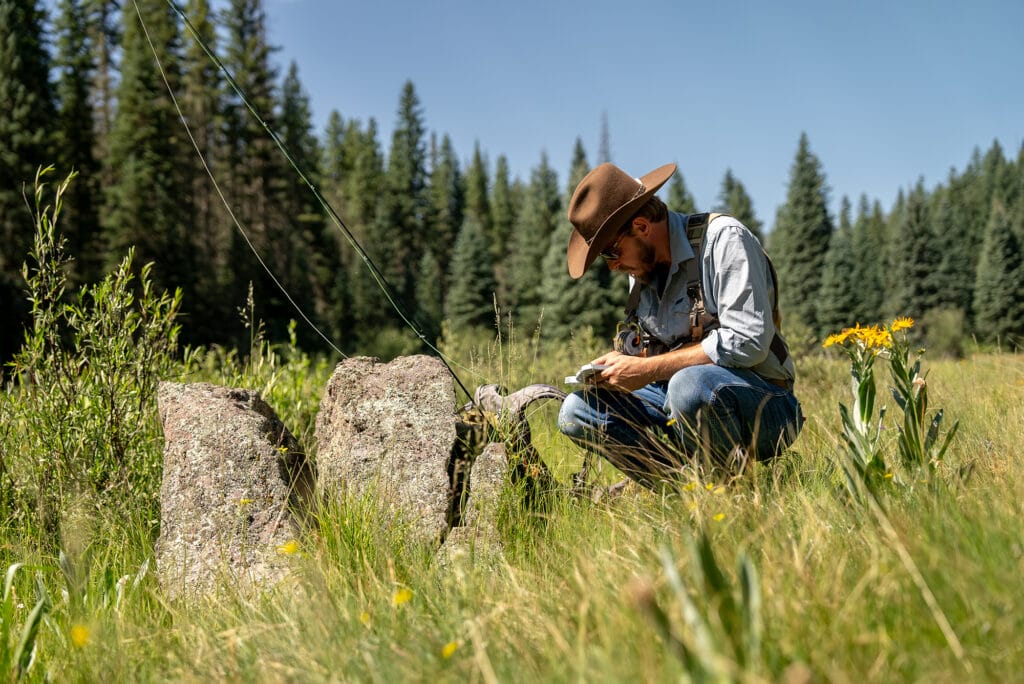
Although Apache trout are coveted by bucket-listers, the opportunity to catch a wild one is still thin at best. A few streams on the reservation, almost exclusively put-and-take, are open. Those waters that were closed to all fishing back when the Chevrolet Bel Air was the nation’s hot automobile are still closed. Off-reservation on the nearby national forest, only a few streams have fishable populations of the trout. In past years, efforts to expand this population have been stunted by misinformation and fear of the highly effective piscicide rotenone and the teeth-gnashing machinations of special interest groups and individuals, including some local members of Trout Unlimited. Others want more opportunity for anglers and it appears as if there is movement in that direction, particularly as more tools become available should the trout be taken off ESA. There is an active program by the Arizona Game and Fish Department to expand Apache trout distribution into historic range on the Apache-Sitgreaves National Forest. A closed stream was recently surveyed and found to contain viable and vigorous Apache trout that anglers may soon be able to fish. Stripping off the red tape of ESA will enhance such efforts.
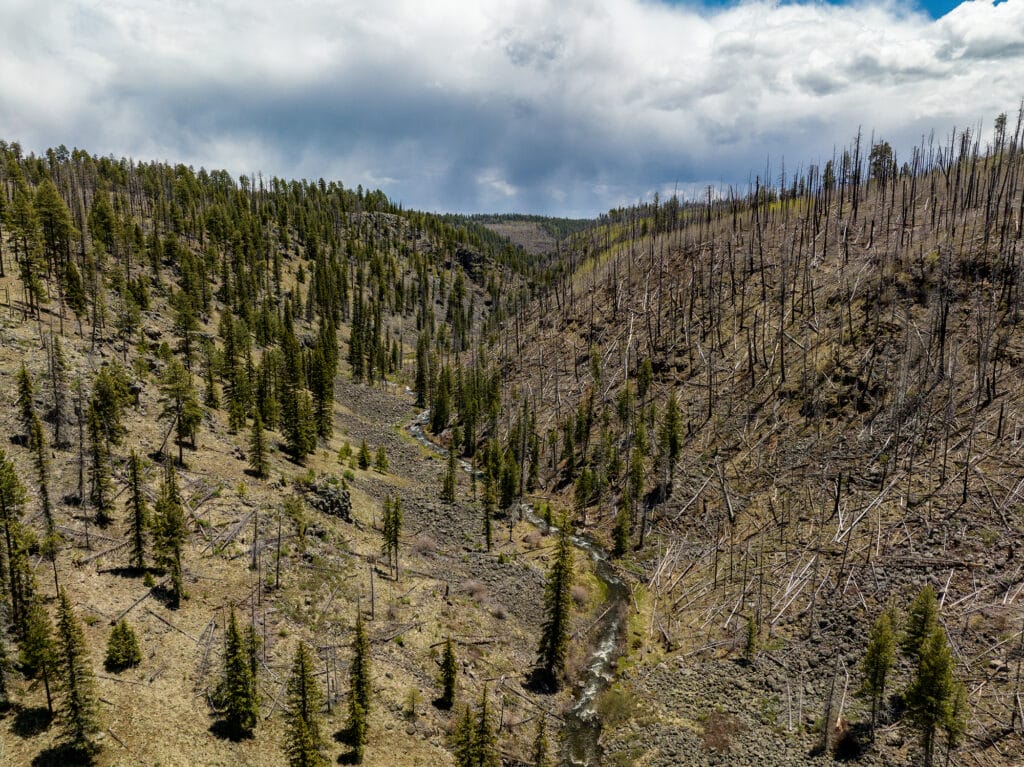
Some time later, Josh and I travel up a gravel road after looking at an impressive fish barrier that was recently created on a Black River tributary. Above the barrier are miles of stream that await the reintroduction of the Apache to its home waters. But even more memorable is something that catches my eye and keeps it: grove upon grove of young aspen sprouting in a forest that once was black ash and cinder as far as the eye could see. Like many places in this country, the White Mountains have felt the impact of wildfire in recent decades. Since the turn of this century, huge fires have chewed up thousands of acres of Arizona pine country. Yet here, where we will pitch our tents and spend a night out under the southwestern skies, are millions of young aspen taller than a man on horseback, bouncing back, rejuvenated by fire, pushed by resilience. Resilience. A landscape, a people, a trout.



